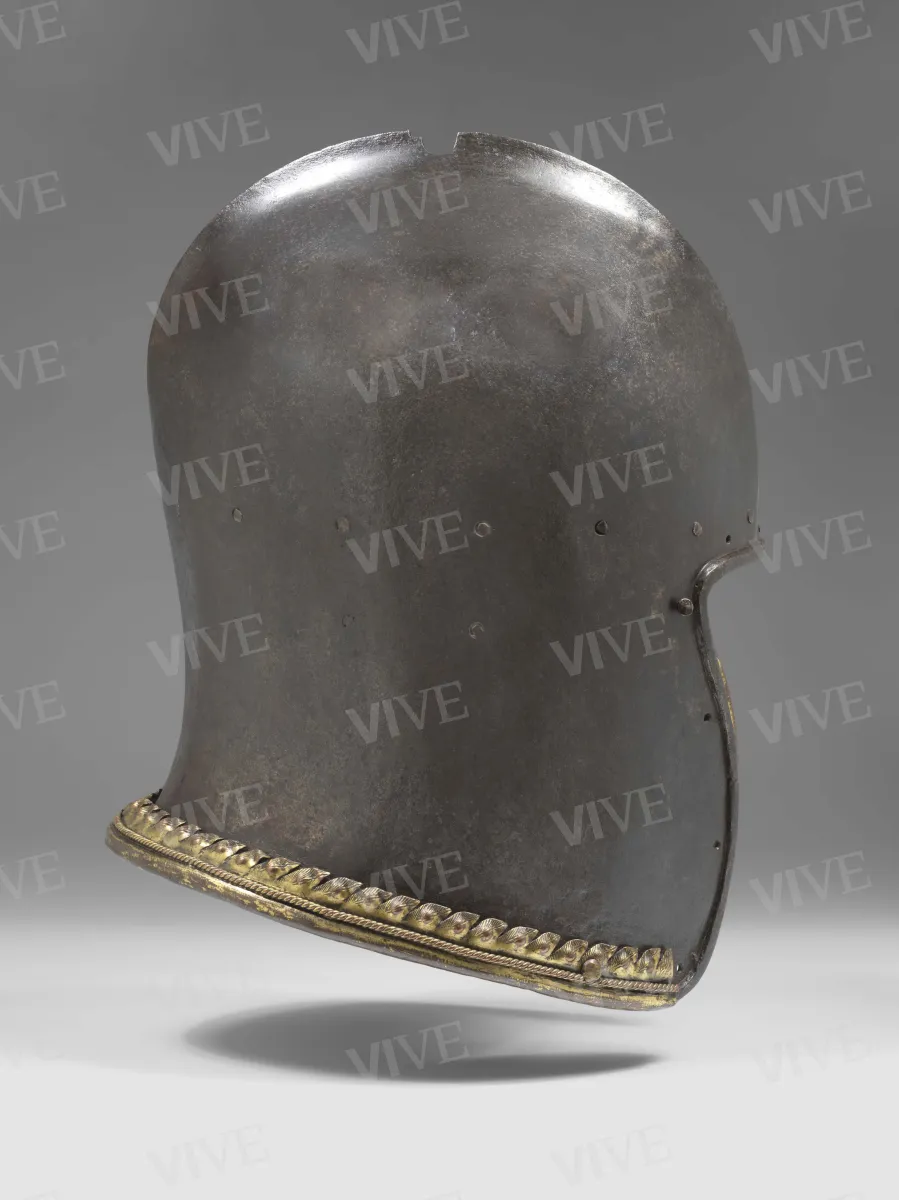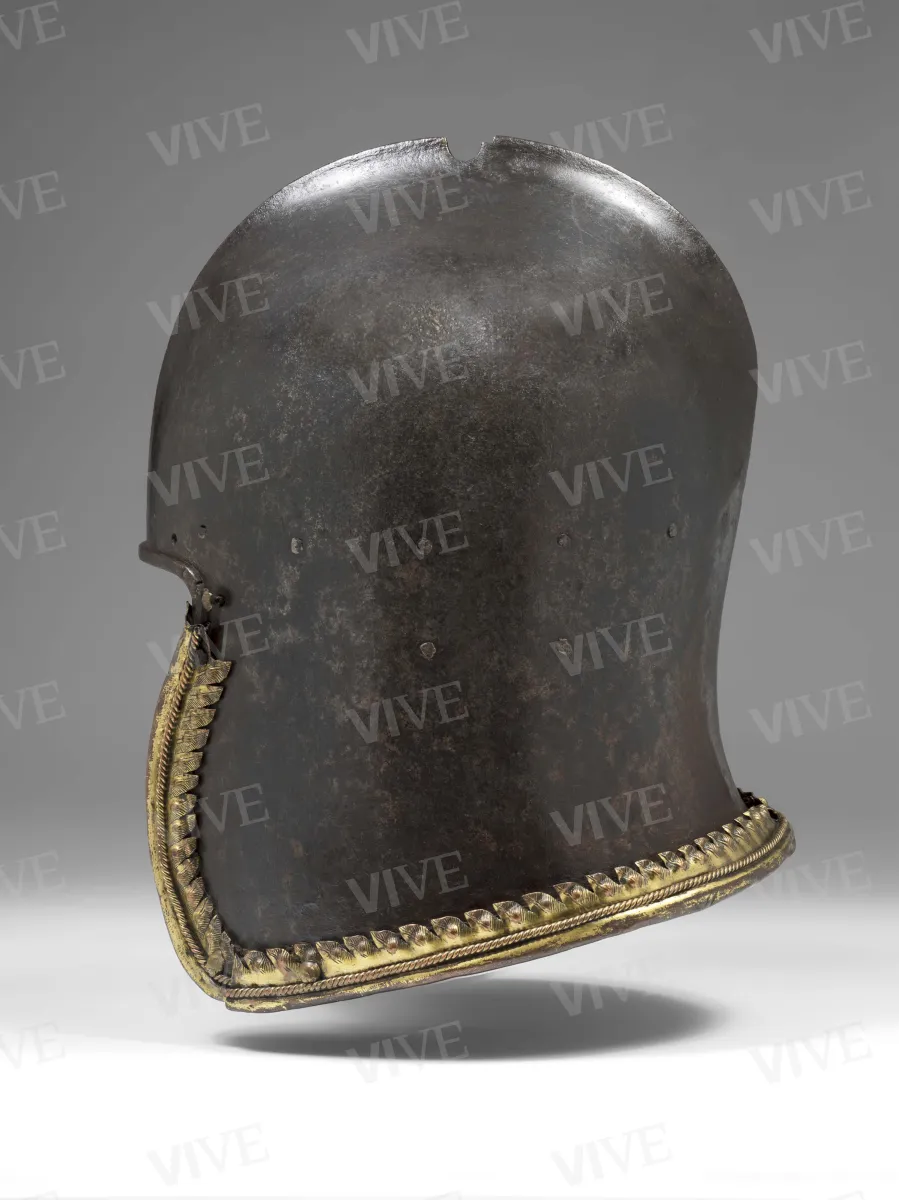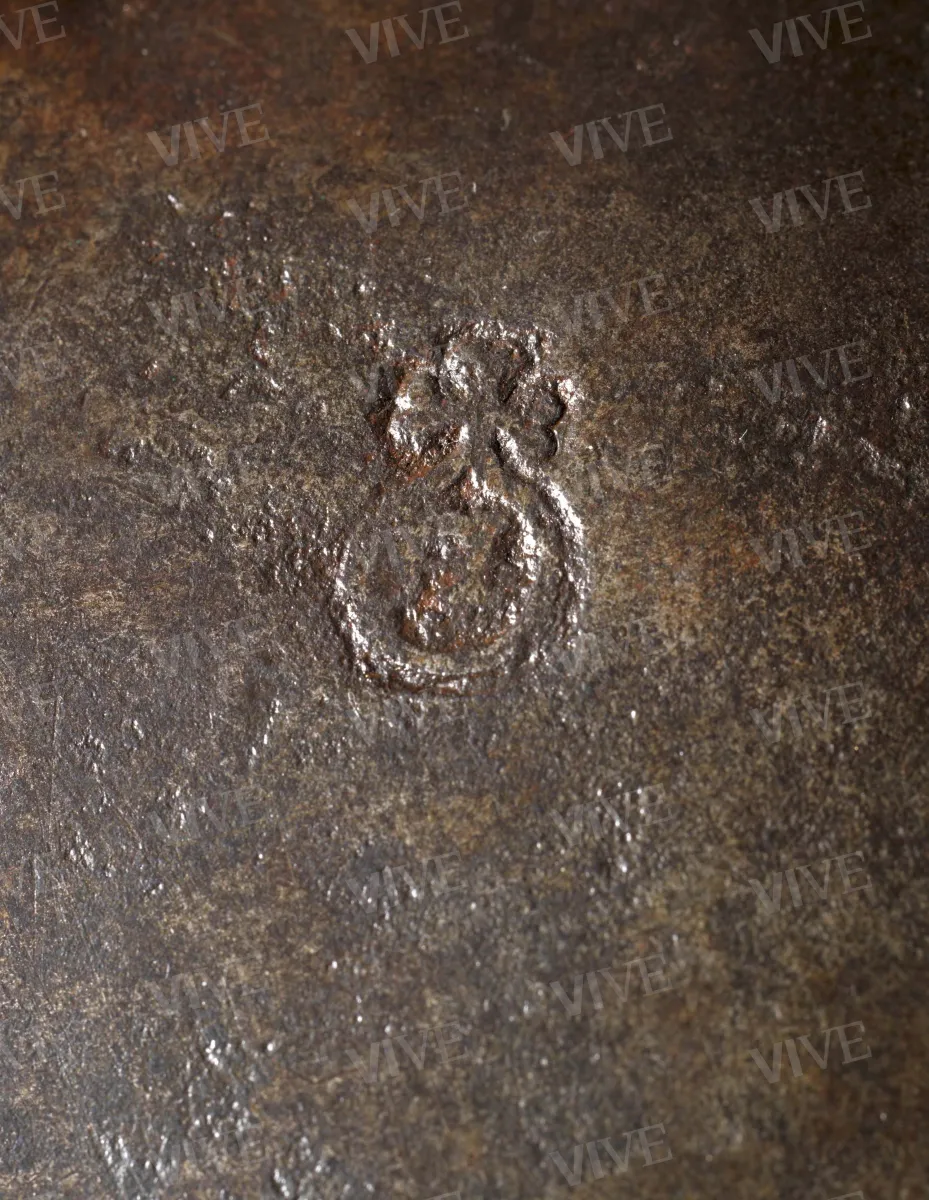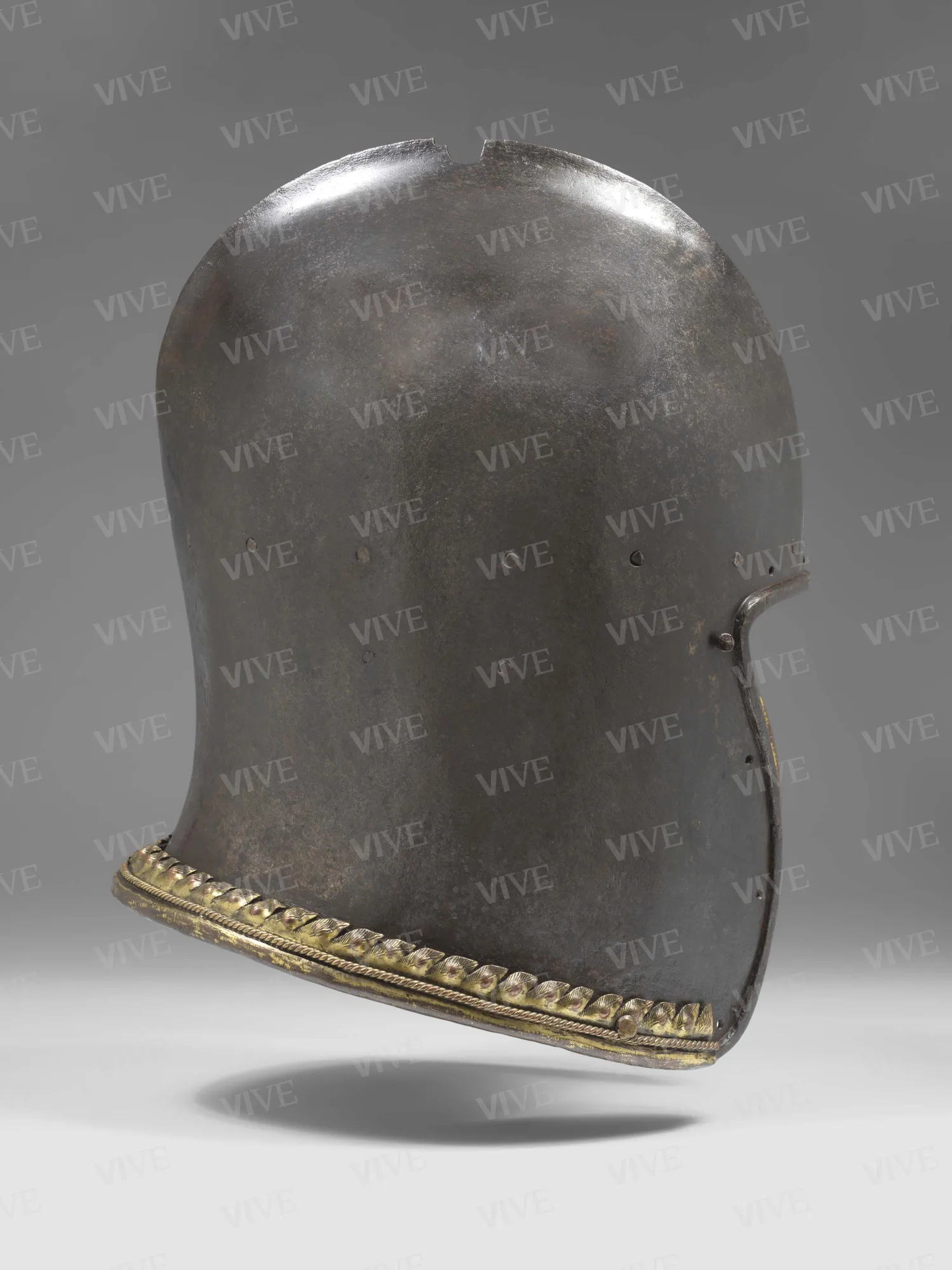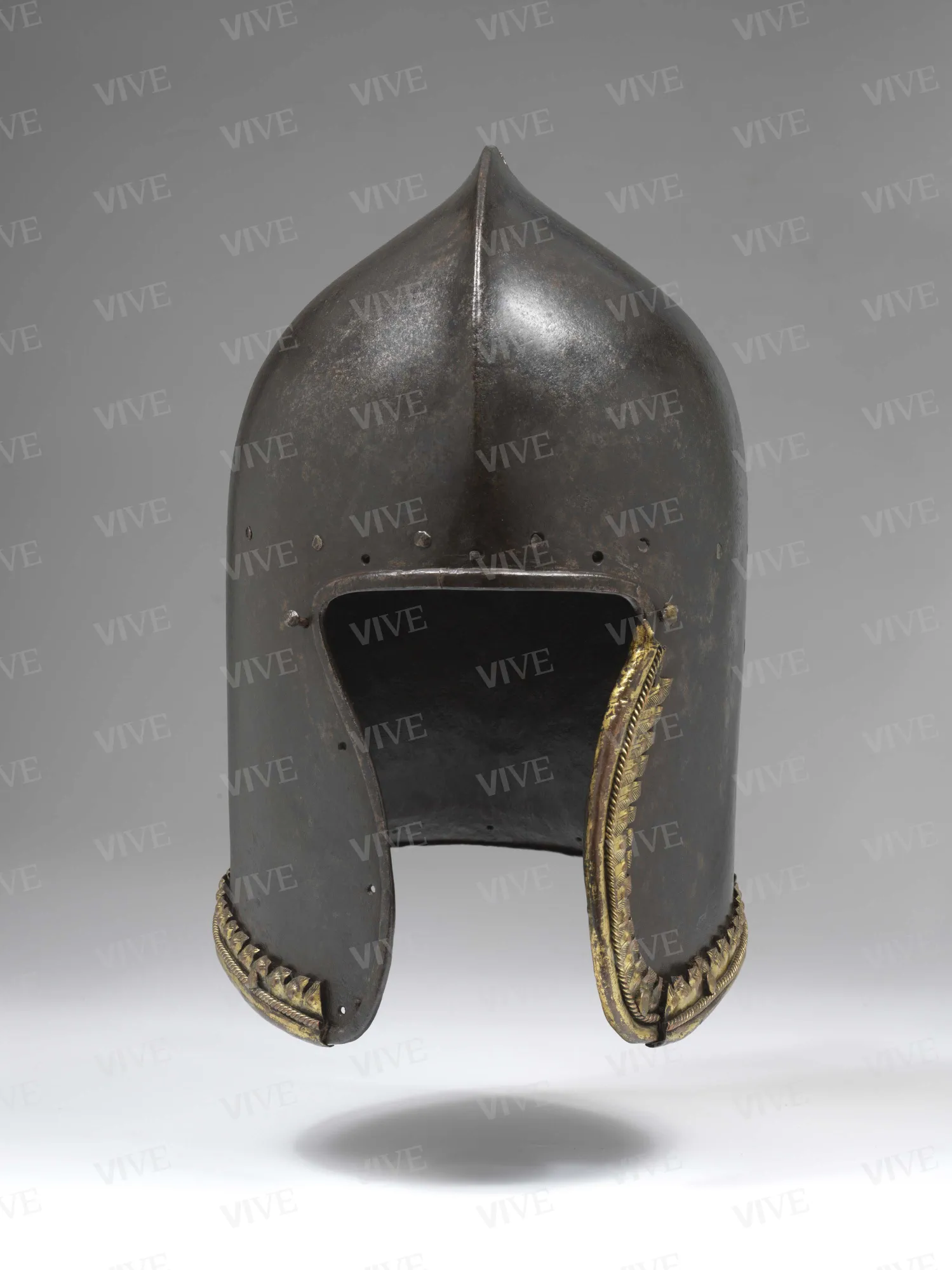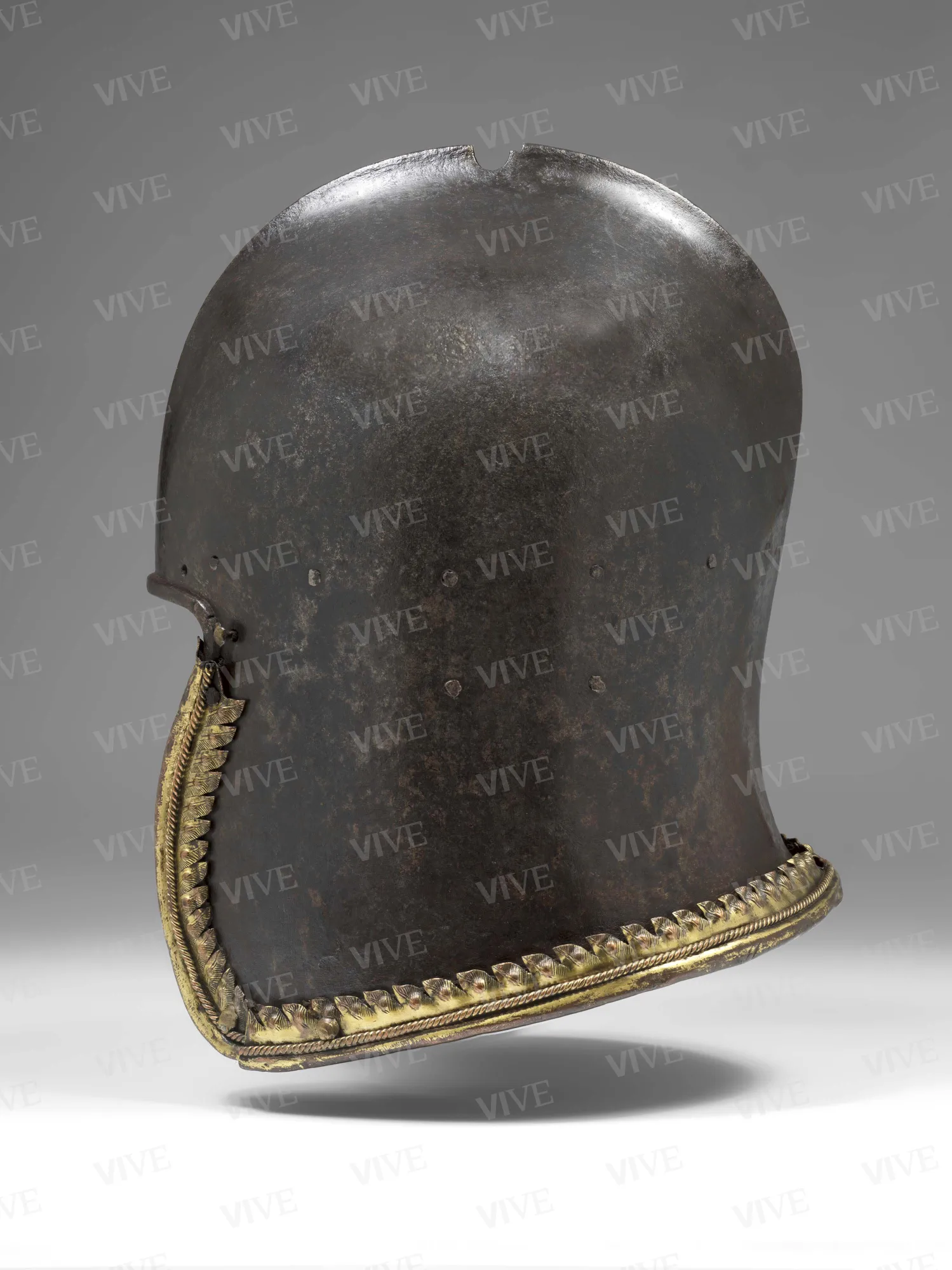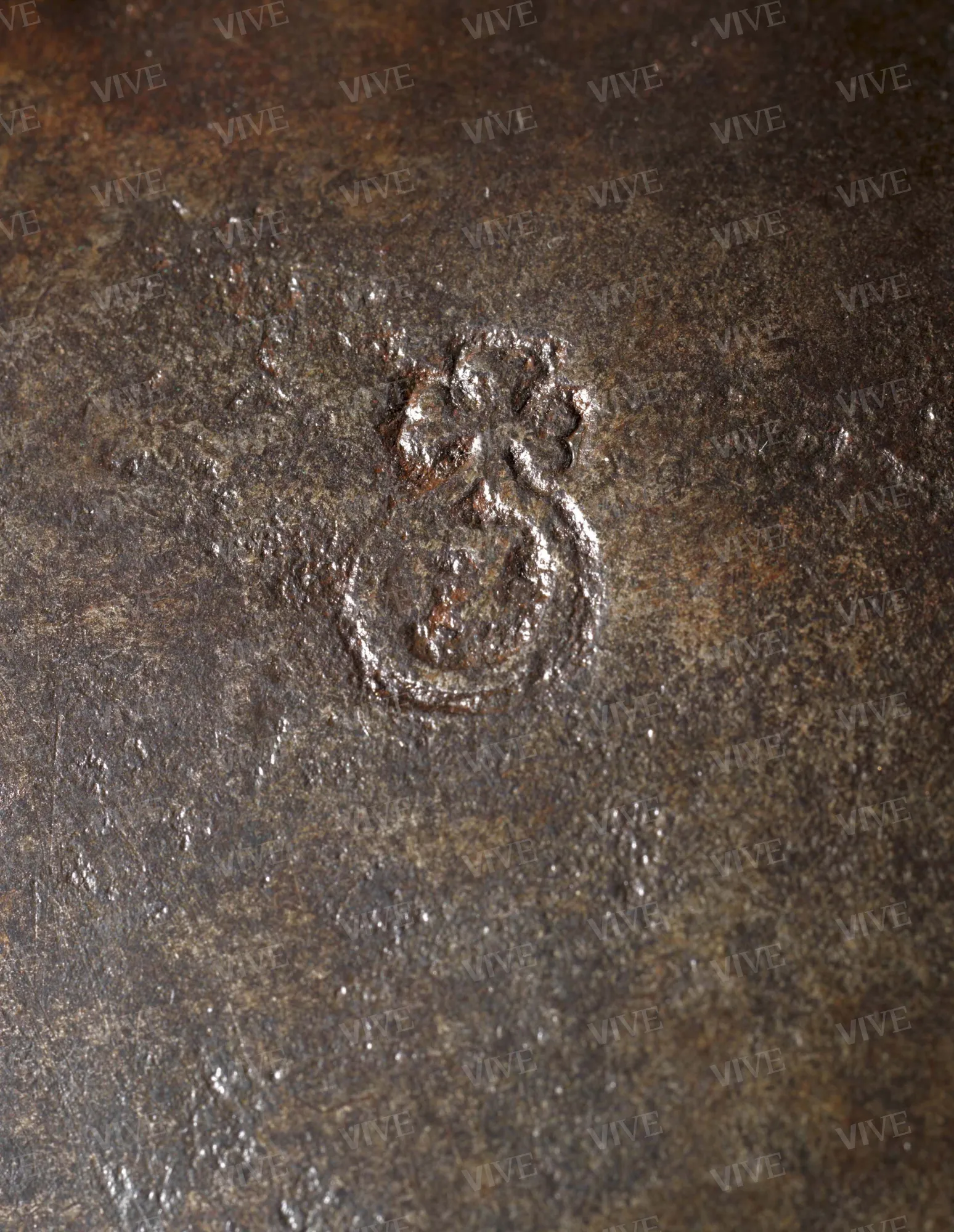Capitanale or barbuta sallet
Florentine production 1440–1450
The sallet, known in this form as the “barbuta,” was a war helmet utilized during the fourteenth and fifteenth centuries for the protection of soldiers' heads. This Italian-crafted example is distinguished by its luxurious style, featuring a gilded copper rim engraved with small leaves. Additionally, it has a hole in the peak for the insertion of a crest. These attributes indicate that it is a captain's helmet, referred to as "capitanale," likely belonging to an individual of high rank.
The sallet, known in this form as the “barbuta,” was a war helmet utilized during the fourteenth and fifteenth centuries for the protection of soldiers' heads. This Italian-crafted example is distinguished by its luxurious style, featuring a gilded copper rim engraved with small leaves. Additionally, it has a hole in the peak for the insertion of a crest. These attributes indicate that it is a captain's helmet, referred to as "capitanale," likely belonging to an individual of high rank.
Details of work
Catalog entry
The visor is crafted as a single piece, featuring an elongated dome with a prominently raised crest that includes an aperture at the top where the crest would be affixed. The face opening is shaped like an inverted U with a curved edge, adorned with nearly intact gilded copper decoration along the edges. This decoration comprises a smooth border, a twisted cord, and a leaf motif. The visor's roof contains rivets used to secure the lining, which are particularly filed down and not protruding (di Carpegna 1969, p. 8, n. 25; di Carpegna 1976, p. 8). On the rear of the roof tile, on either side of the ridge, there is the double mark of the arms maker: an “A” surmounted by a cross.
Examples similar to this one have been associated with both a Milanese production area (di Carpegna 1969, p. 8, n. 25, referring to a helmet in the Marzoli Museum in Brescia, and those held at the Metropolitan Museum in New York, as noted in Pyhrr 2000, p. 7, nn. 3–4). Additionally, they have been linked to Florence (Scalini 2018, p. 73, n. II.2, suggesting the conventional name of “Master of the A in the crusader’s orb” based on the described brand). These associations indicate that the production of this type of helmet was characteristically Italian.
Also called a “barbuta” (“beard”) helmet, this type of helmet takes its shape from the kranos, an ancient helmet used by Greek warriors. It emerged in Italy as early as the fourteenth century and continued to be used throughout the fifteenth century. Made from a single piece of iron, the barbuta was very durable and could have a U-shaped front opening, like this one, or a T- or Y-shaped one for visibility while providing face protection (Boccia, Coehlo 1968, p. 143; Oakeshott 2012, pp. 109–111).
The elaborate decoration, which contrasts chromatically with the skull element, along with the presence of a hole for the crest, suggests that this particular example was a “barbuta capitanale.” This type of headdress was likely intended for newly knighted individuals or persons of high rank (Scalini 2018).
This helmet is mentioned in a letter dated February 1904, addressed to Prince Ladislao Odescalchi (1846–1922) by the English antiquarian Samuel James Whawell, who was one of his advisors on the acquisition of weaponry. Whawell invited Odescalchi to negotiate the price of this barbuta, which was offered by the Florentine antiquarian Stefano Bardini, its owner. Due to an interrupted hemline, the original asking price of 20,000 lire was reduced to 8,000 lire. Consequently, Odescalchi successfully acquired the fifteenth-century sallet for his collection (Laking 1920–1922, II, p. 11; Pyhrr 1994; Barberini 2007, p. 110).
Giulia Zaccariotto
Entry published on 27 March 2025
State of conservation
Good.
Coats of arms, emblems, and marks
The back of the headpiece features two brands with an "A" inside an almond shape topped by a cross.
Provenance
Florence, Collezione Stefano Bardini;
Rome, Collezione Ladislao Odescalchi (Odescalchi, no. 732);
purchased by the Italian State, 1959;
Rome, Museo Nazionale di Palazzo Venezia, 1969.
Exhibition history
Poppi (AR), Castello dei Conti Guidi, Mostra di armi antiche. Sec. XIV–XV, July 16–August 26, 1967;
Rome, Museo Nazionale di Palazzo Venezia, Antiche armi dal sec. IX al XVIII. Già Collezione Odescalchi, May–July 1969;.
Rome, Museo Nazionale di Palazzo Venezia, Belle e terribili. La collezione Odescalchi. Armi bianche e da fuoco, December 2002–March 2002;
Rome, Museo Nazionale di Castel Sant’Angelo;
Rome, Museo Nazionale di Palazzo Venezia, Armi e potere nell’Europa del Rinascimento, July 26–November 11, 2018.
References
Lacking Guy Francis, A Record of European Armour and Arms through Seven Centuries, 5 voll., London 1920-1922;
Terenzi Marcello (a cura di), Mostra di armi antiche. Sec. XIV-XV, catalogo della mostra (Poppi, Castello dei conti Guidi, 16 luglio-26 agosto 1967), con schede a firma del curatore, Firenze 1967, n. 22;
Boccia Lionello Giorgio, Coelho Eduardo Teixeira, L’arte dell’armatura in Italia, Milano 1968;
di Carpegna Nolfo (a cura di), Antiche armi dal sec. IX al XVIII. Già Collezione Odescalchi, catalogo della mostra (Roma, Museo Nazionale di Palazzo Venezia, maggio-luglio 1969), con schede a firma del curatore, Roma 1969, p. 8, n. 25;
di Carpegna Nolfo, Le armi Odescalchi, Roma 1976;
Pyhrr Stuart W., S.J. Whawell and the Art Market, in The Eleventh Park Lane Arms Fair, London 1994, pp. 14-23;
Pyhrr Stuart W., European Helmets, 1450-1650. Treasures from the Reserve Collection, New York 2000;
Barberini Maria Giulia (a cura di), Belle e terribili. La collezione Odescalchi. Armi bianche e da fuoco, catalogo della mostra (Roma, Museo Nazionale di Palazzo Venezia, 18 dicembre 2002-23 marzo 2002), Roma 2002, p. 18;
Barberini Maria Giulia, La collezione Odescalchi di armi antiche: storia della raccolta del principe Ladislao, in «Bollettino d’arte», s. VI, XCI, 2006 (2007), 137/138, pp. 101-114;
Fossà Bianca, Studio conservativo delle armi e armature Odescalchi. Nuove metodologie per la schedatura di una collezione, in «Bollettino d’arte», s. VI, XCI, 2006 (2007), 137/138, pp. 115-142;
Oakeshott Ewart, European Weapons and Armour. From the Renaissance to the Industrial Revolution, Woodbridge 2012;
Scalini Mario (a cura di), Armi e potere nell’Europa del Rinascimento, catalogo della mostra (Roma, Museo Nazionale di Castel Sant’Angelo; Roma, Museo Nazionale di Palazzo Venezia, 26 luglio-11 novembre 2018), con schede a firma del curatore, Cinisello Balsamo 2018, p. 73, n. II.2.

